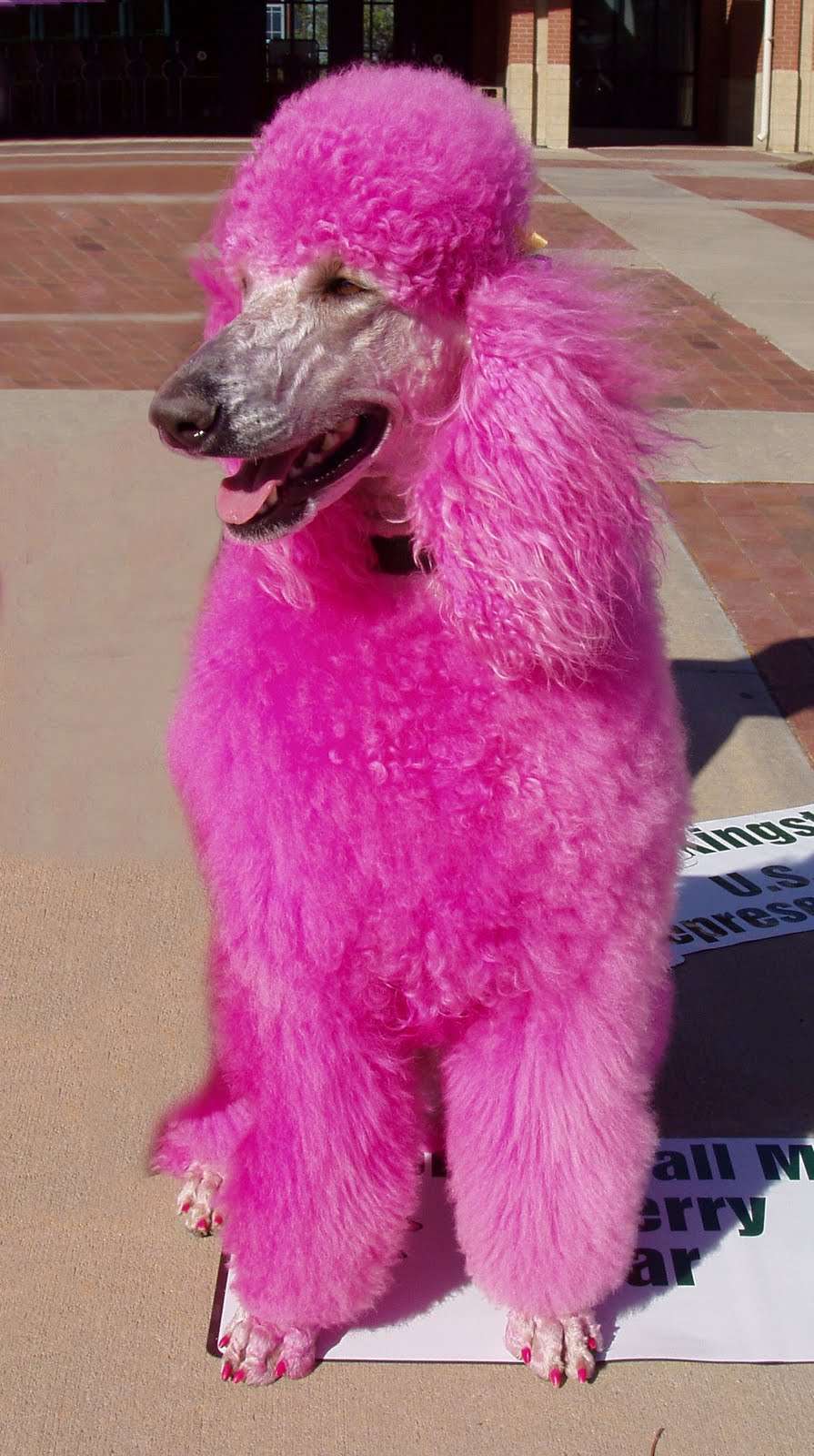Are pink poodles a natural phenomenon, or is there a more colorful story behind their vibrant appearance? The truth is, those eye-catching, cotton-candy-colored canines owe their hue to a little help from their human companions, defying the traditional spectrum of poodle colors.
The allure of a pink poodle often sparks curiosity, and it's a topic that frequently pops up in conversations about unique pet grooming. While the standard poodle comes in a variety of recognized shades black, white, brown, and the increasingly popular apricot and red pink is not among them. This intriguing shade is achieved through the application of dye, a practice that has its own set of considerations.
The tale often begins, as it did in a particular incident, with a call to local authorities. Around 4:15 p.m., police received a report regarding a "small pink poodle running loose" near the intersection of River Drive and Lanza Avenue. This is a perfect example of how the unusual sight of a pink poodle can capture public attention and even become the subject of local news.
- Discovering The Enchanting Tale Of Angelie Grace Dye Grandfather
- Azealia Banks September 9 The Untold Story Of A Fearless Icon
Albino poodles, while sharing some visual similarities with their pink counterparts, have a different genetic makeup. Unlike a standard white poodle with a black nose, albino poodles have pink noses and eye rims. Their eyes can range from pink to red or even bright blue. Due to the potential for health issues, similar to merle poodles, prospective owners are often advised to consider the implications of acquiring an albino poodle.
For those considering adding a poodle to their family, the array of colors is certainly a point of discussion. While the classic black, brown, and white poodles are relatively common, the apricot and red varieties are far less so, making them more valuable. The color of a poodle often impacts its price, and the demand for these unique shades continues to grow. Irrespective of the color you choose, the loyalty and intelligence of the poodle breed are traits that many owners celebrate.
The concept of dyeing a poodle's hair offers owners a way to personalize their pets. This method involves using special pet-safe dyes to create a variety of effects, with pink being a popular choice. One technique involves vegetable food coloring, favored for its safety and temporary nature. The duration of the color will depend on the dyeing method and the dog's activity level and care routine. Clipping the poodle's coat is also an essential part of maintenance.
- Lauryn Hill Locs The Ultimate Guide To Her Iconic Style
- Am I Your Roman Empire Pookie Exploring The Quirks Of Modernday Love And Relationships
Professional groomers also play an essential role, and the "Pink Poodle Pet Spa & Boutique," located at 6244 W Jefferson Blvd, Fort Wayne, IN 46804, is one example of a business dedicated to this particular service. The success of these businesses demonstrates the demand for customized grooming and the appeal of dogs with vibrant colors.
A closer look at the history of the practice, its safety aspects, and any associated controversy offers a more comprehensive picture. The focus shifts from the novelty of the pink poodle to the process itself. This includes the safety of the dyes used, the techniques involved, and the ethical implications of altering an animal's appearance. It is vital to utilize only pet-friendly dyes to ensure the animal's health.
The reality is that pink poodles are not a naturally occurring phenomenon. They are the result of human intervention, whether through dyeing or through meticulous breeding practices. When a poodle displays this hue, it is almost always due to a human intervention, as this particular color does not occur naturally in the breed.
The best candidates for dyeing have light coats, typically white or light apricot. Darker poodles are more challenging to dye pink because the color may not take well, and even with lighter dogs, the results may vary. In some cases, a deep pink is not achievable. Before deciding to dye your poodle, make sure to check if the dye is safe.
One noteworthy anecdote involves a rescue scenario, involving a pink poodle named Molly and a police officer. Though the first responders quickly located Molly, securing her proved tricky, highlighting the spirited nature of these animals.
The grooming process doesn't end with a dye job. Clipping the coat is also very important. The coat of a pink poodle must be clipped every four to six weeks, based on their lifestyle. You can do this at home or take the pet to a professional groomer.
- Unveiling The Mystique Of Harbor Elm Your Ultimate Guide
- Gus The Bass The Ultimate Guide To Discovering The Iconic Music Maestro


